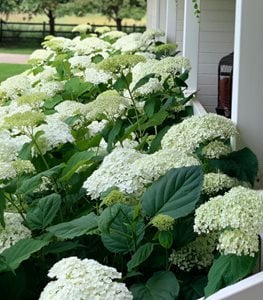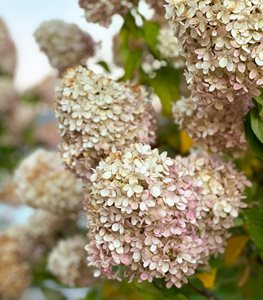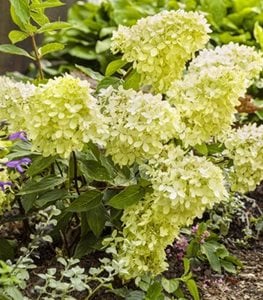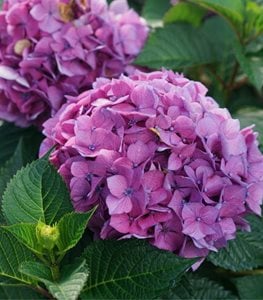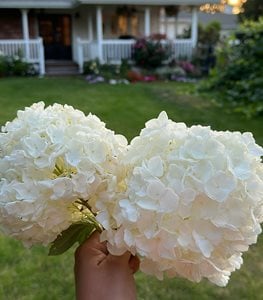From Dream to Reality: A Storybook Hydrangea Garden in Idaho
Skye Hamilton transformed her property into a picturesque garden—and it all started with hydrangeas. Learn how she did it, and get her top hydrangea tips.As a child, Skye Hamilton of Hamilton House Designs got lost in the pages of books such as The Secret Garden by Frances Hodgson Burnett and Anne of Green Gables by L.M. Montgomery. Idyllic storybook gardens bursting with blooming flowers occupied a special place in her mind, and it’s those visions that set the wheels in motion for what would come later.
Fast-forward to 2015: Skye and her husband were living in California, but the two knew they wanted to get back to Idaho to be with family. With an eye on houses listed for sale, Skye came across a farmhouse in Eagle, Idaho, with a wraparound porch that needed some work. “I remember thinking, that porch needs hydrangeas,” says Skye. At that point, Skye had already been an interior designer for more than a decade, so she was no stranger to transforming places that needed TLC. “I saw the potential in the house and assured my husband I could make it special.” It took a little convincing, but Skye and her husband ultimately bought the place—sight unseen.
Skye's Top 6 Hydrangea Growing Tips | Skye's Hydrangea Recommendations
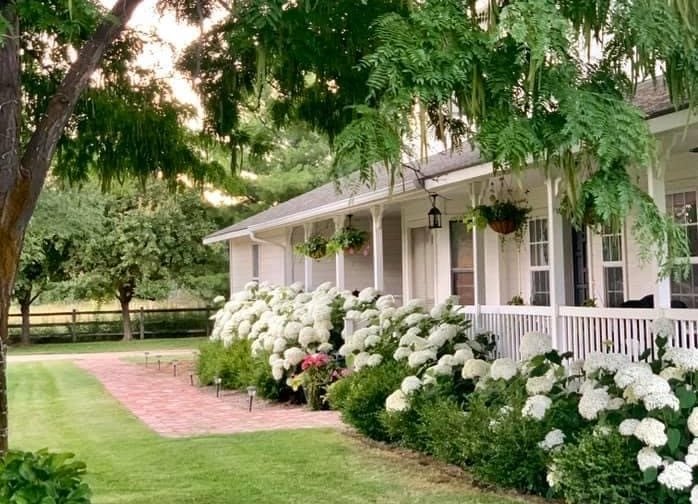
Within two weeks of moving into her new home in Idaho, Skye Hamilton of Hamilton House Designs and her husband planted 16 Incrediball hydrangeas around the front porch. The number of hydrangeas (and Skye’s love for them) has only grown ever since. Photo by: Skye Hamilton
When they moved into the farmhouse, they had hardly been there two weeks when they ripped out the barberry that surrounded the porch. “We had barely opened our moving boxes, but there we were, ripping out bushes with our car and a rope.” From there, Skye headed to the nearest nursery and talked to the head of the shrub department, who was also a master gardener, and told her what she wanted to do. “She took me over to the Incrediballs and said they’d be perfect for what I wanted to do.” Skye brought home 16 Incrediball hydrangeas and planted them around the porch.
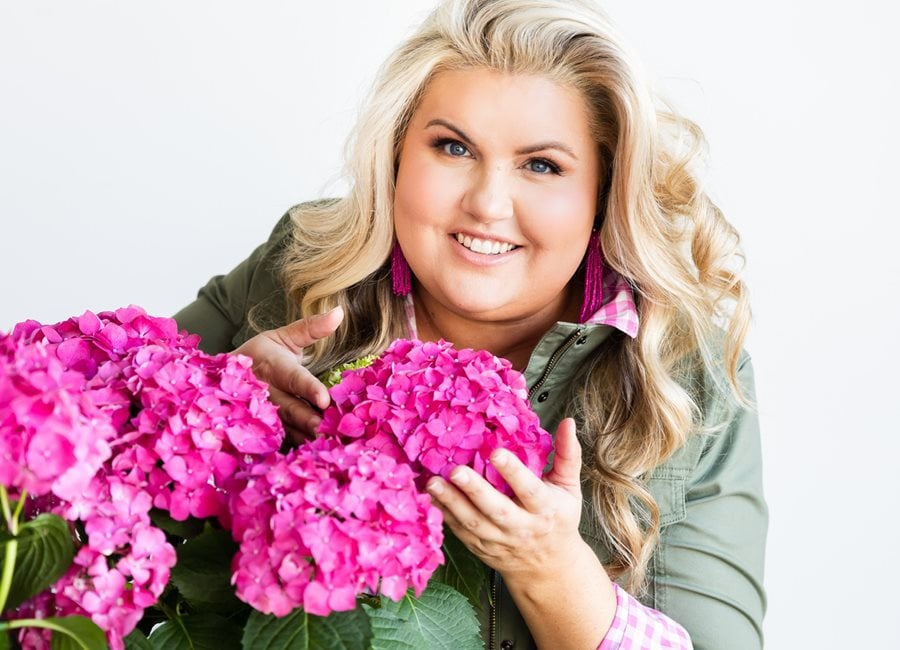
Dubbed “Hydrangea Queen” by other gardeners, Skye has become a wealth of knowledge and source of inspiration on all things hydrangea (and other gardening topics) to people all around the country. Photo by: Ampersand Studios
That was just the beginning. “From that point, I became obsessed,” shares Skye. She kept adding more and more hydrangeas until she had 50 in 2020. And that’s when the whole world started shutting down.
With the chatter on social media becoming too much to handle, Skye blocked out the negativity and began only following two groups on Facebook: Hydrangea Happiness and Proven Winners ColorChoice. She started posting pictures of her house, and the questions rolled in. “People asked about my hydrangeas, and I developed a little bit of a following,” Skye says. “It was kind of like therapy, being in that realm.” This new forum sparked her love of helping people and talking about gardening. “I was also able to learn a lot from master gardeners all around the country.” She delved into different types of hydrangeas, did a ton of research, and asked a lot of questions.
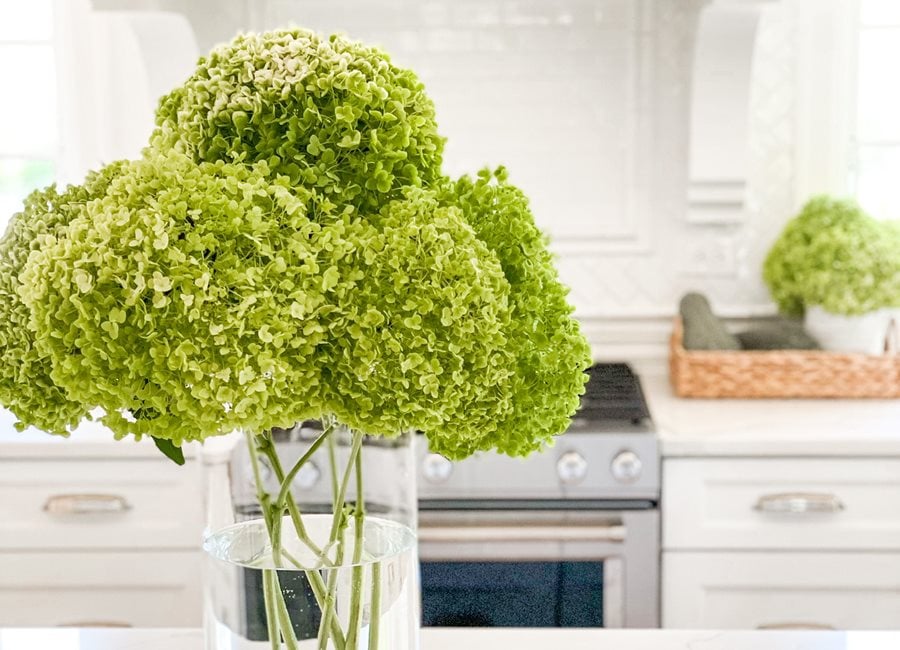
Also an interior designer, Skye has always had an eye for design. All year long, she makes great use of her plethora of hydrangeas, using them in vases, as tabletop decor, in wreaths, and drying them for all kinds of decorative purposes. Photo by: Skye Hamilton
Skye already had an Instagram account with her interior design business, @HamiltonHouseDesigns, and decided to start posting some pictures of her hydrangeas for fun. Her account exploded almost instantly. Now, 189,000 people follow her account. Completely self-taught, Skye has had moments of feeling out of her depth. “I’m not a master gardener or a landscape architect,” says Skye. But her dedication to learning, honing her expertise, and willingness to share her knowledge with others is what makes so many gravitate toward her for gardening advice and inspiration.
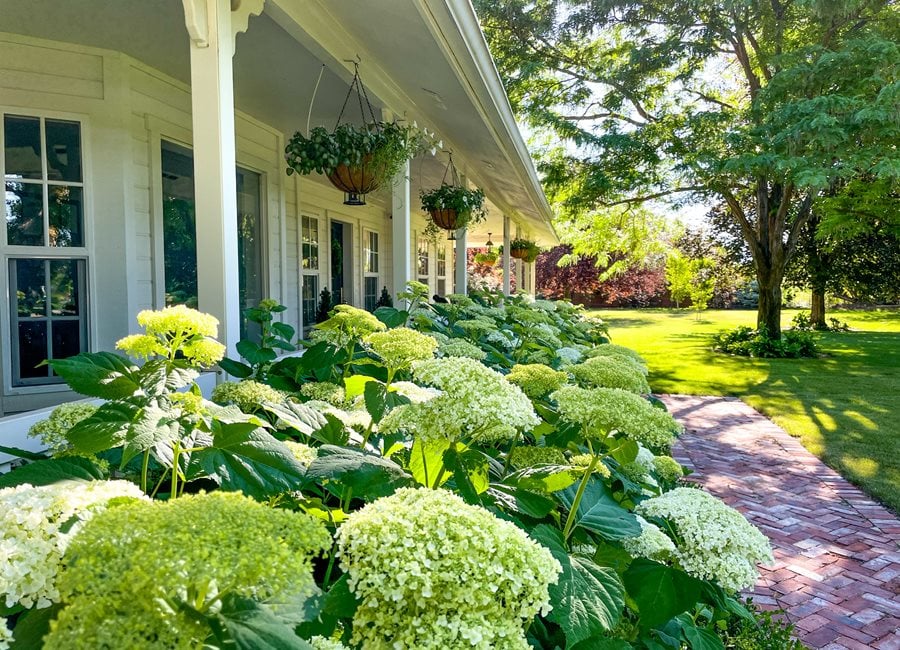
Incrediball hydrangeas burst into bloom in early summer, creating the storybook-garden ambiance Skye dreamt of as a child. In late summer, flowers begin to take on a greenish shade which persists until late fall. Photo by: Skye Hamilton
Now, in the same way the pages of the books she devoured as a child sparked creativity within Skye, she is providing that spark for gardeners all around the country. There’s a lot of work that goes into creating the garden she has today and sharing it with such a large audience, but for Skye, doing the work is therapeutic. “It’s something to put my mind to,” she says. “I’m building the life I want to live in. One where I can walk outside and be surrounded by flowers and beauty.”
SKYE'S TOP 6 HYDRANGEA GROWING TIPS
After years of experience with hydrangeas and sharing the knowledge she’s learned with the masses, Skye has earned the well-deserved title of “Hydrangea Queen.” Here, she generously shares her top six hydrangea-growing tips for those just starting out.
1. Start with an easy variety.
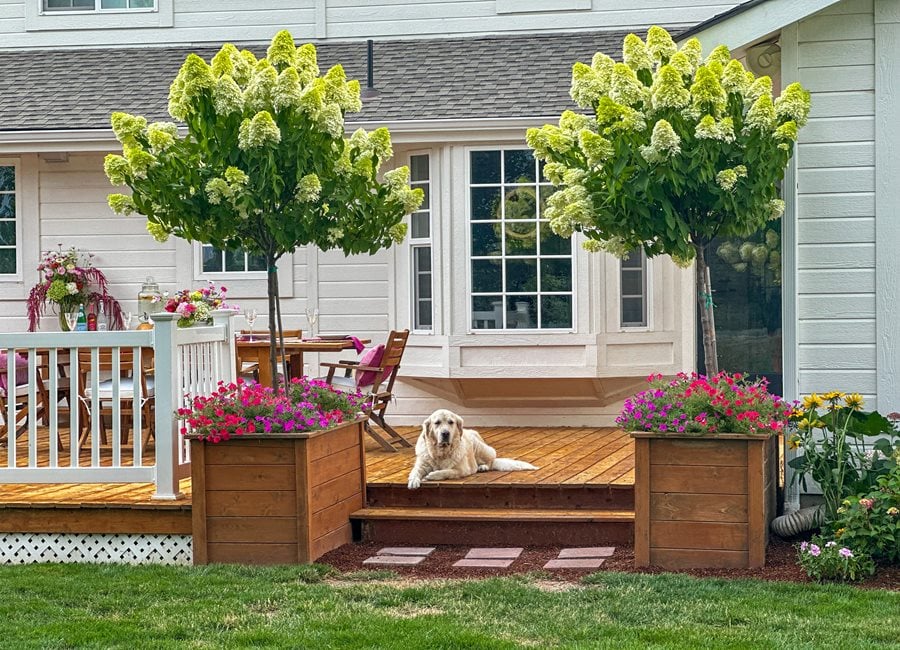
Limelight hydrangeas underplanted with Supertunia Vista® Jazzberry® and Supertunia Vista® Paradise flank the steps leading up to Skye’s back porch where Wriggly Fluffybottom Hamilton (Rigg for short) lounges. Skye loves that these beauties come back year after year. Photo by: Skye Hamilton
If you’re new to growing hydrangeas, Skye recommends picking a panicle (Hydrangea paniculata) or smooth hydrangea (H. arborescens) variety to start. “Hydrangeas aren’t the cheapest plant. It’s not like buying a pack of seeds,” says Skye. Panicle and smooth hydrangeas, which are known for being hardy, are a great place to start. Panicles can handle a fair amount of sun and smooth hydrangeas are prolific, reliable bloomers.
Skye suggests starting with one of these hardy varieties, then, if it goes well and you are up for more of a challenge, go for a bigleaf or mophead (H. macrophylla), oakleaf (H. quercifolia), or climbing hydrangea (H. petiolaris)—one of the divas. “When people start with bigleaf hydrangeas and don’t choose the perfect spot to put it, they’re almost setting themselves up for failure, because this is a finicky hydrangea.”
2. Know the variety and your area.
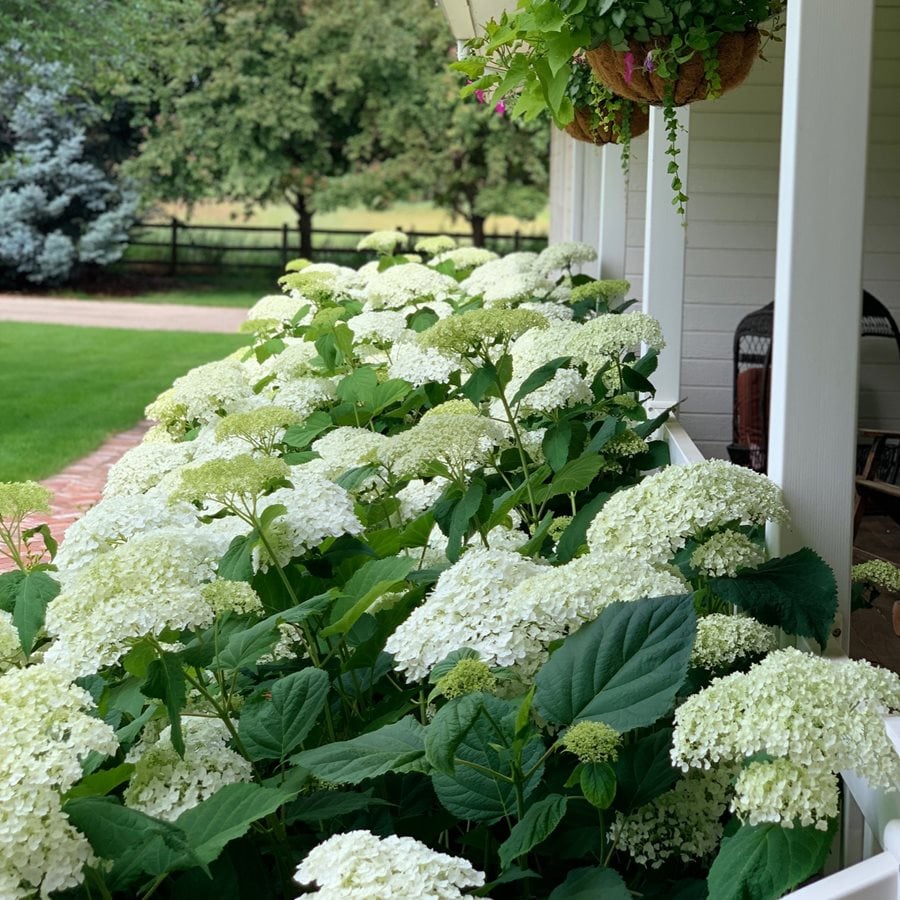
Starting with one variety and learning about that particular type is one way to set yourself up for success. When Skye started with hydrangeas, she opted for all Incrediball, which are a smooth variety. Photo by: Skye Hamilton
Since each variety of hydrangea has a specific set of needs, there’s a lot of misinformation out there. Advice and care tips for one type of hydrangea do not apply across the board. That’s why Skye advises that gardeners new to growing hydrangeas pick one variety to start with, learn the basic needs of that particular type and how it will grow in your area. See how that goes before you add more into the mix. “You don’t need to learn how to care for every hydrangea at once,” says Skye.
3. Never plant hydrangeas that have blooms and come in foil wrappers.
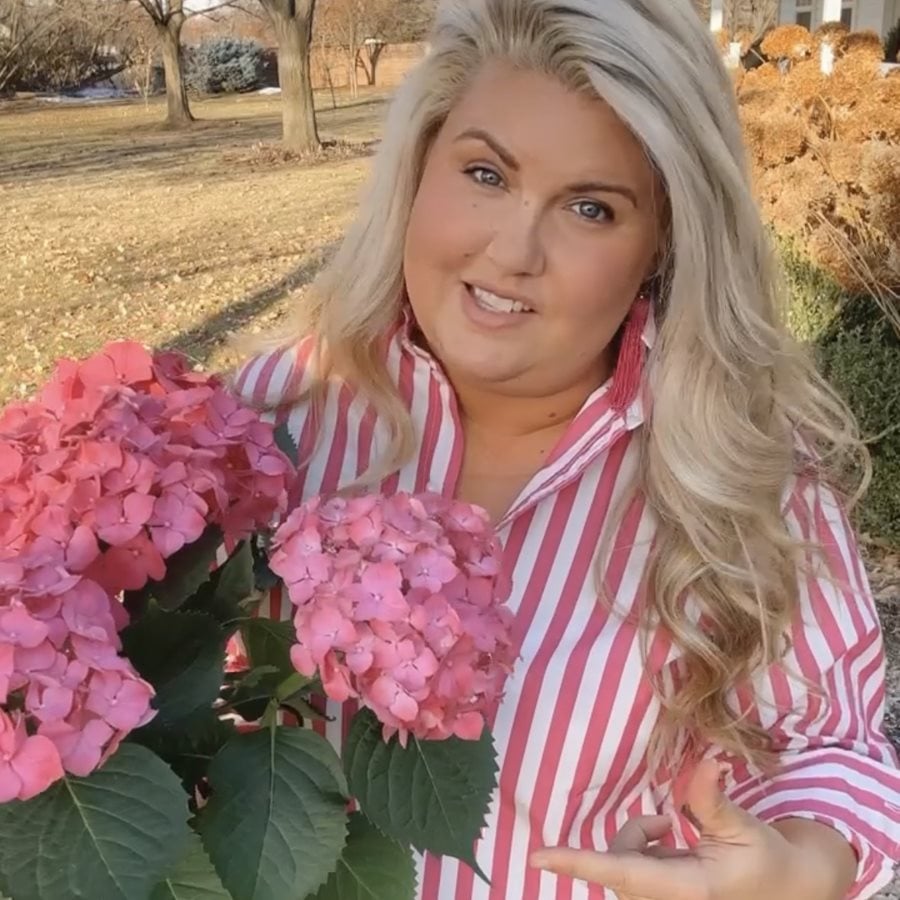
Skye with a florist hydrangea. Photo by: Skye Hamilton
Those new to hydrangeas sometimes make the mistake of planting “florist hydrangeas” in full bloom that they’ve received as a gift, often purchased from the grocery store. “When you put those in the ground, they hardly ever bloom again because they have often been given so many hormones and forced to bloom artificially,” says Skye. Instead, she recommends opting for plants from reliable growers such as Proven Winners who trial their plants in different climates to see how they’ll do.The best time to plant a hydrangea is in spring or fall when it’s sticks and buds and leaves. Skye shares that because hydrangeas are one-season bloomers, whatever is currently growing on the plant is what you’re going to get that season. See Skye’s video on florist hydrangeas here.
4. Observe what successful local gardeners are doing.
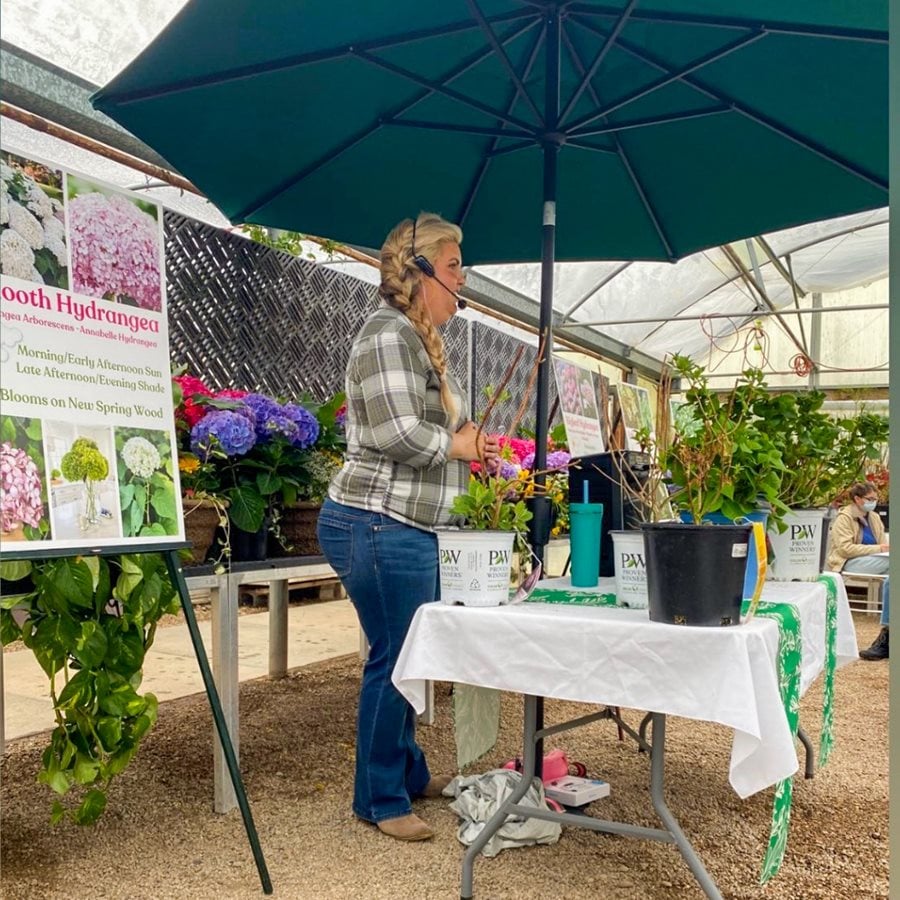
Skye teaching a hydrangea workshop.
The best way to learn how to grow in your area? See what gardeners in your area are doing! There are several places to find people to learn from:
- Talk to staff at local nurseries. “A reputable local nursery is your first and best resource,” shares Skye. “They know their stuff, and if they don’t have an answer, they usually know who to point you to.”
- Contact master gardeners in your area. They have a wealth of valuable local growing information and can often set you up with resources.
- Search for positive social media accounts of gardeners who live in your region. Can’t find anyone? That’s okay! Search for gardeners that are in your zone or similar climate.
- Attend local classes. Check nearby nurseries to see if they have a calendar of classes. Cities often have local gardening groups or clubs that host sessions for the community, too.
5. When in doubt, don’t prune.
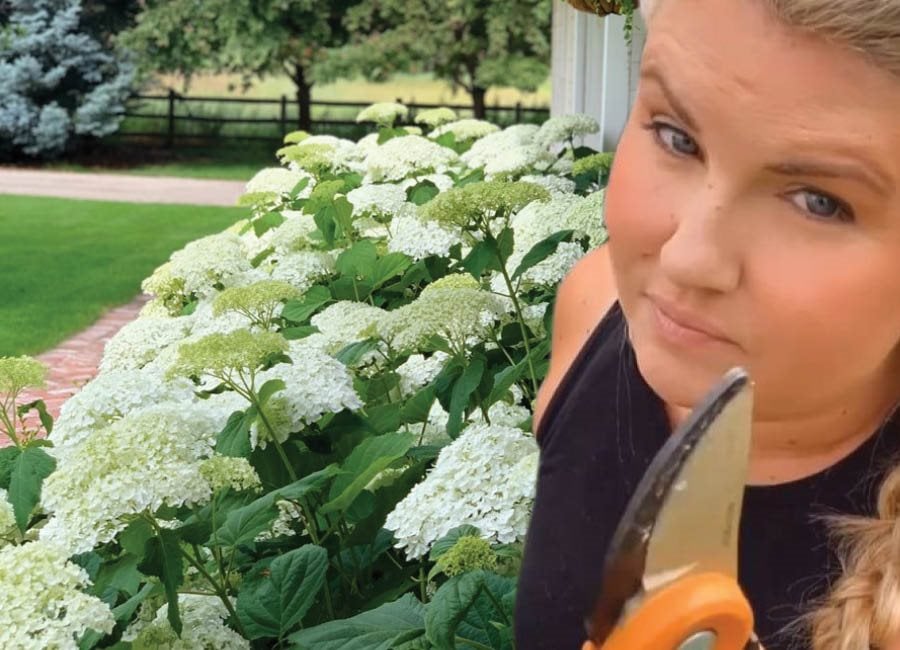
Skye encourages gardeners to know their hydrangea needs before pruning, but if you’re unsure, err on the side of not pruning rather than cutting a plant back way too far. Photo by: Skye Hamilton
“There’s no hydrangea that’s going to be hurt by not pruning,” says Skye. In fact, she adds that you’re more likely to get blooms if you don’t prune than if you prune the wrong way. Skye also emphasizes that if you have a gardener who cares for your landscape, don’t assume that they know how to care for your type of hydrangea. “All too often, I’ve heard the tragic tale of a landscaper cutting a hydrangea bush way too far.” On the bright side, hardy hydrangeas are typically able to bounce back from a too-harsh pruning. See Skye’s video on pruning particular hydrangea types.
6. Don’t fret about shade.
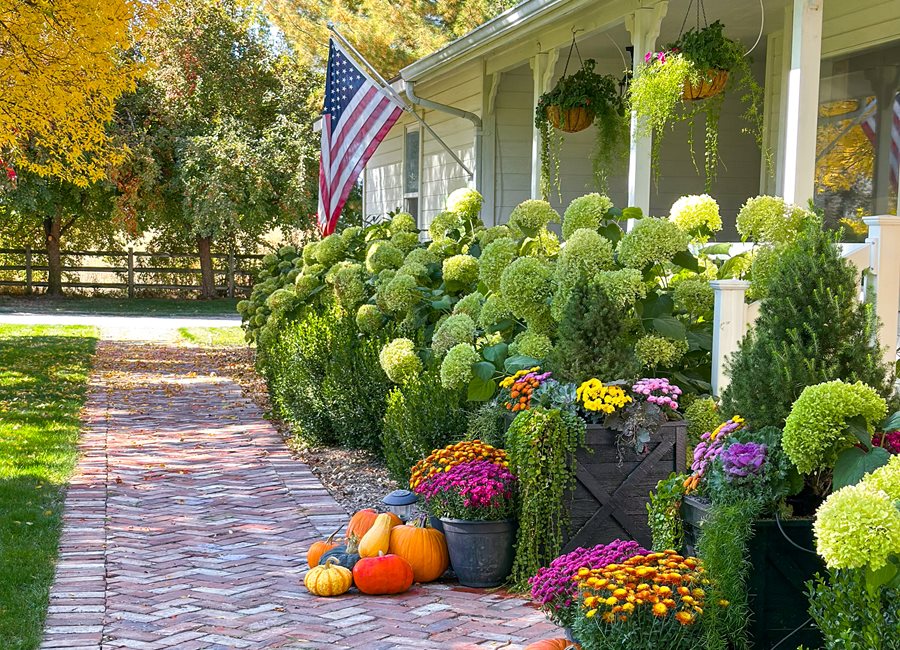
The Incrediball hydrangeas in front of Skye’s porch get sun and dappled shade throughout the day, then full shade after 5pm. How much shade your hydrangea needs depends on the type of hydrangea and your zone. Photo by: Skye Hamilton
Hydrangeas are often referred to as shade plants, so sometimes gardeners without full-shade areas think they can’t grow hydrangeas. However, “in reality, hydrangeas need a lot more sun than people think,” shares Skye. “Even oakleaf hydrangeas still need about four hours of sun to be really good bloomers.” If you live in a hot climate like Skye, she notes that panicles do well because they’re the most drought tolerant, adding that smooth hydrangeas often need a lot of water, especially in the first year.Skye’s rule of thumb? “You can’t go wrong with morning or early afternoon sun and late afternoon shade.”
See more from Skye, book her as a speaker, or check out her hydrangea course on her website: HamiltonHouseInc.com.
HYDRANGEA RECOMMENDATIONS FROM SKYE
Of course it’s impossible to pick a favorite, but here are some of Skye’s tried-and-trues that she recommends to those getting started!
Incrediball® Smooth Hydrangea (H. arborescens)
“These are my number one,” says Skye. This is the variety that Skye started with back when she first moved to her property in 2015—the one that led to her passion for hydrangeas.
Zones: 3-8
Exposure: Partial to full sun
Mature size: 4 to 5 feet tall and wide
Bloom time: Summer
Buy Incrediball® hydrangeas from Proven Winners.
'Limelight' Panicle Hydrangea (H. paniculata)
Skye describes this variety of hydrangea as “tried and true, one that comes back beautifully every year.” She loves that their hardiness and large stature make a huge impact in the garden. By the end of summer, the pale-green and white blooms transform to a cream and ballet-slipper pink.
Zones: 3-9
Exposure: Partial to full sun
Mature size: 6 to 8 feet tall and wide
Bloom time: Late summer to fall
Buy 'Limelight' hydrangeas from Proven Winners.
Little Lime® Panicle Hydrangea (H. paniculata)
“These are similar to limelight but half the size, so they’re great for under a window,” says Skye. She notes that you can’t make a hydrangea smaller than its mature size, so search for a dwarf variety of the type you like if you need something more compact. “Considering size at the beginning is going to save you heartache,” she says. “Whatever big variety you like, there is most likely a small variety which makes sense for most people’s landscapes.”
Zones: 3-8
Exposure: Partial to full sun
Mature size: 3 to 5 feet tall and wide
Bloom time: Summer
Buy Little Lime® hydrangeas from Proven Winners.
Let's Dance® Series Bigleaf Hydrangea (H. macrophylla)
This is a relatively new series from Proven Winners. “These macrophylla hybrids don’t need as much babying as some of the older varieties,” says Skye. There are 11 varieties in the series that are fairly compact, ranging from 2 to 4 feet tall and wide.
Zones: 5-9, with the exception of Sky View®, Can Do®, and ¡Arriba!® which are hardy down to Zone 4.
Exposure: Partial to full sun
Mature size: 2 to 4 feet tall and wide
Bloom time: Summer
Buy Let's Dance series hydrangeas from Proven Winners. (Let's Dance Lovable™ pictured)
Gatsby Moon® Oakleaf Hydrangea (H. quercifolia)
“This one has really gorgeous blooms all summer long, and beautiful maroon foliage in fall."
Zones: 5-9
Exposure: Partial to full sun
Mature size: 6 to 8 feet tall and wide
Bloom time: Summer
Buy Gatsby Moon® hydrangeas from Proven Winners.
RELATED:
Growing Hydrangeas
How to Grow & Care for Limelight Hydrangeas
Types of Hydrangeas
